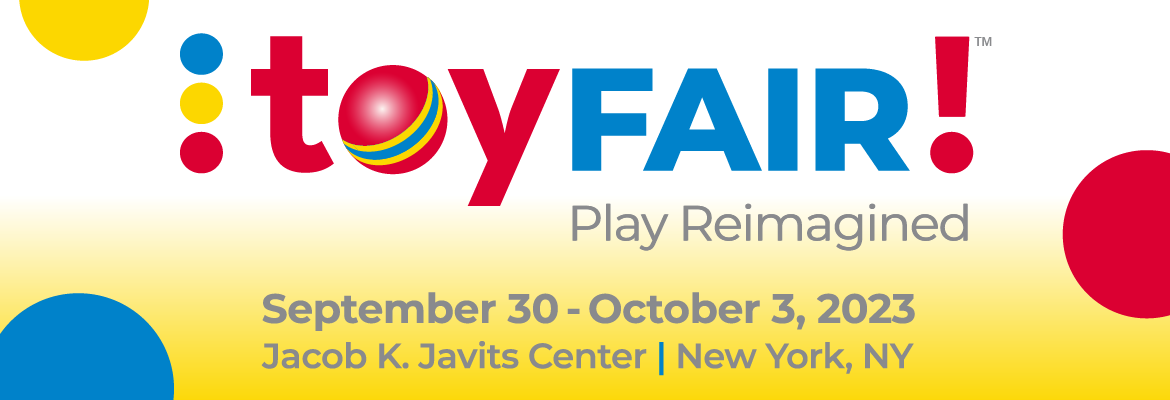

NEW YORK, Oct. 20, 2020 -- The upcoming holidays should be a time to relax after a long year, but parents need to be vigilant about ensuring counterfeit and imitation toys – which have the potential to be unsafe – do not end up under the tree.
A shocking 83 percent of parents say their kids receive toys from grandparents and other gift-givers which they suspect are not purchased from verified sellers, including 48 percent who say it happens "frequently," according to a survey of 1,000 U.S. parents conducted by Wakefield Research for The Toy Association.
What's more, 2 in 5 parents (45 percent) say they would keep a toy even if they suspected it was counterfeit and potentially unsafe – more than double the 19 percent who said the same in 2019. This is troubling since these toys may not have been tested for safety. In contrast, legitimate toys sold by verified sellers and known brands are tested for compliance with more than 100 strict U.S. safety standards.
"Products sold at retail by legitimate U.S. toy companies, whether in brick-and-mortar stores or online, are rigorously tested for compliance as part of our nation's world-class safety system," said Steve Pasierb, president & CEO of The Toy Association. "Yet consumers must be vigilant as illicit sellers of counterfeit and dangerous imitation products have infiltrated online marketplaces, deceiving shoppers and gift-givers while posing a serious safety threat to children. The Toy Association works year-round with government agencies and leading e-commerce platforms to combat this menace and to educate shoppers on how to avoid unintentionally bringing unsafe fakes into the home."
Nearly a fifth of parents (19 percent) say their child has already received a counterfeit or knock-off toy purchased online, and the likelihood of a child receiving a counterfeit toy may increase with the age of the gift-giver: among those whose children receive gifts from grandparents and/or great aunts and uncles who shop online, a concerning 71 percent of parents have doubts that those gift-givers know how to ensure the toys they purchase online are coming from verified sellers.
With parents planning to do 58 percent of their holiday toy shopping online this year, it's critical that they follow The Toy Association's top tips for avoiding counterfeits. Parents are urged to share this advice with family members and other gift-givers – and to visit www.PlaySafe.org for more safety advice.
Ahead of playtime, parents should always read the instructions for assembly and use. For children that are too young to read, demonstrating how to play with a toy is the best way to make sure they understand how to safely enjoy it. Best of all, playing together as a family is lots of fun and even has enhanced developmental benefits for children.
The Toy Association and its members take toy safety extremely seriously and are committed year-round to educating parents and caregivers about safe play. Following this simple safety advice can go a long way toward preventing unnecessary accidents and injuries.
For more toy safety tips and information, visit www.PlaySafe.org, The Toy Association's trusted resource for parents and caregivers.
About The Toy Association www.toyassociation.org / www.thegeniusofplay.org / www.playsafe.org
Founded in 1916, The Toy Association™, Inc. is the not-for-profit trade association representing all businesses involved in creating and delivering toys and youth entertainment products for kids of all ages. The Toy Association leads the health and growth of the U.S. toy industry, which has an annual U.S. economic impact of $97.2 billion, and its 1,000+ members drive the annual $27 billion U.S. domestic toy market. The Toy Association serves as the industry's voice on the developmental benefits of play and promotes play's positive impact on childhood development to consumers and media. The organization has a long history of leadership in toy safety, having helped develop the first comprehensive toy safety standard more than 40 years ago, and remains committed to working with medical experts, government, consumers, and industry on ongoing programs to ensure safe and fun play.
About the Survey
The Toy Association Survey was conducted by Wakefield Research (www.wakefieldresearch.com) among 1,000 U.S. parents who are their household's primary toy purchaser, between September 25 and October 5, 2020, using an email invitation and an online survey.